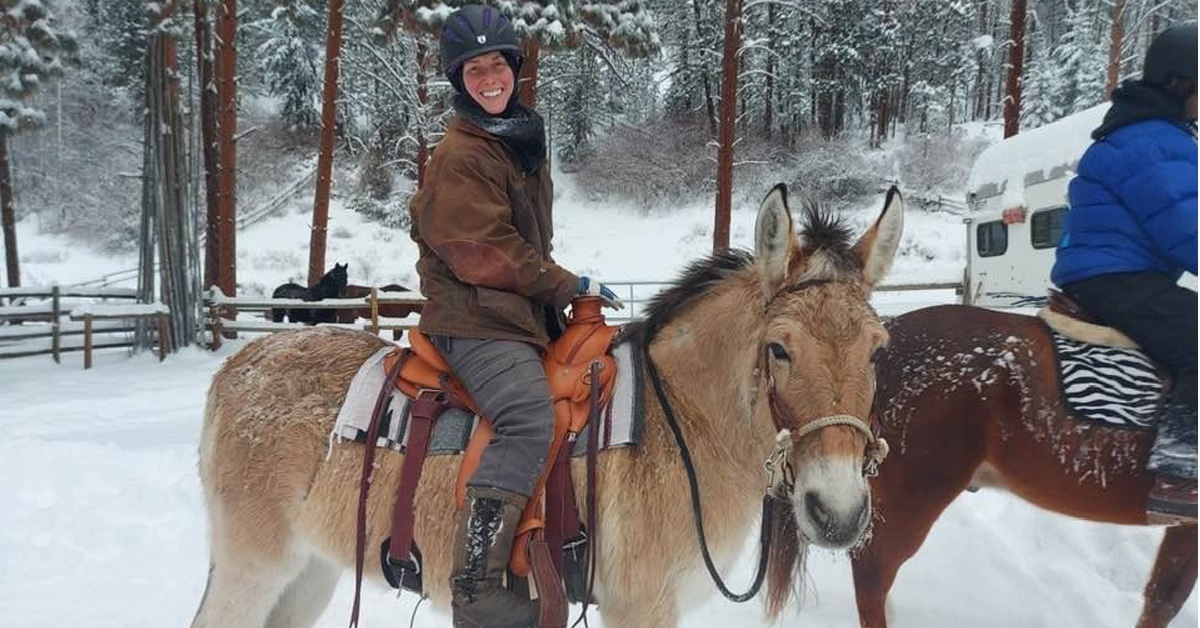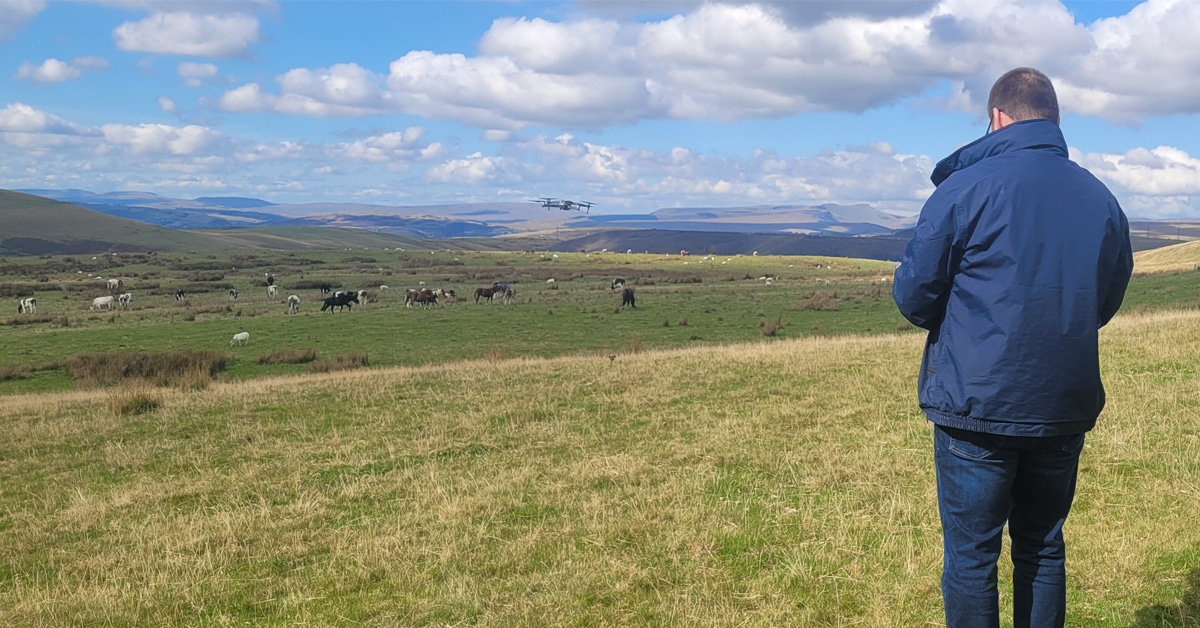Knowing how to record vital signs and recognize what is within normal range for your horse is a crucial skill. The ability to interpret vital signs plays a key role in knowing whether to monitor the horse on your own or to call the vet immediately in an emergency, or when illness is suspected. It is also important to be aware of the normal mannerisms of your horse at rest and after work, so that even slight signs of distress will be apparent.
Dr. Juan Samper, of Langley, BC, is the owner of JCS Veterinary Reproductive Services. In addition to his work in his private practice, he has been a faculty member at the Ontario Veterinary College as well as the Kansas State University Veterinary School. He is a past president of the Society for Theriogenology and North Eastern Association of Equine Practitioners. Here, he explains when and how to record and interpret your horse’s vital signs.
Observation
First, “you always want to observe the horse’s attitude,” said Dr. Samper. “Look at his eyes, pay attention to the way he is standing and notice whether he is weight bearing equally on all four legs; check for flaring nostrils, dull eyes, sour attitude or absence of fecal matter in the stall. Any signs of discomfort should alert you that vital signs should be checked.”
So, when should you call the vet? Taking vital signs will determine the appropriate response and chain of events. “It depends on the level of stress that the horse is in,” explained Dr. Samper. “If it is just a mild case of distress, then it may be a case where you can monitor the horse, and reassess over the course of an hour or two. If the horse is in severe pain or distress, it is important to call right away. In general, when I have a client who suspects that the horse isn’t doing well, I’ll tell them to take the vital signs and monitor the horse over the next hour to see what happens. If it looks like the horse is getting better, I often suggest monitoring it for another two or three hours. If the horse is not improving or at any point is getting worse, then I would call a vet right away.”
Dr. Samper stresses safety above all else when checking and monitoring vital signs, as even those experienced around horses are putting themselves at risk when dealing with an animal in severe distress. “It doesn’t matter how well you know the horse or how comfortable you feel with horses,’ he said, ‘if the horse is in pain, it can be quite unpredictable and dangerous, and you have to be careful.”
The normal ranges for the vital signs depend on several factors, including age and fitness level of the horse. Some medications may also alter readings, and any medication should be noted when reporting findings to the vet. It is important not to administer medication unless specifically instructed by the vet, as it may mask symptoms needed to diagnose illness.
Heart Rate
The heart rate is most often monitored by listening to the heart with a stethoscope behind the left elbow, but can also be measured by feeling the pulse on the mandibular artery located under the jaw bone. A resting horse should have a heart rate anywhere between 36-42 beats per minute. Being aware of your horse’s normal resting rate is crucial, as it can vary depending on the individual. Count the heart rate or pulse over a 15-second period and multiply by four to get the reading.
A digital pulse can also be located in the ligamentous groove under the inside of the forelimb fetlock. This is more a sign of any increased blood flow to the foot and an augmented pulse could be an indication of a foot abscess or laminitis. With the digital pulse, the emphasis is more on feeling the strength of the pulse rather than counting for a heart rate and determining if it is evident on one or both sides.
Hydration
To check a horse’s hydration level, simply pinch a small portion of skin on the neck and observe the elasticity as it moves back into place. “A well-hydrated horse will have skin that snaps back to place very quickly,” explained Dr. Samper. “Any delay is an indication of dehydration and should be taken seriously.”
Dehydration and electrolyte imbalance can lead to an increased probability of colic. Though horses do retain a significant amount of water in their intestines to help in the digestion of forage, a depletion of fluids leads to a higher chance of impaction.
Other signs of dehydration include mucous membranes that appear dry and a horse that is acting listless. Being aware of the normal amounts of water consumed by your horse is imperative. Horses lose important minerals as well as fluids as they sweat during workout, so electrolytes are a good option to maintain healthy hydration levels for horses in hard work.
Capillary Refill Time
Capillary refill is measured by the amount of time it takes for the colour to return to the small blood vessels, or capillaries, in the gum tissue when it has been depressed, which in a healthy horse is generally two seconds.
“The colour of mucous membranes is indicative of several things,” explained Dr. Samper. ‘If the horse is having trouble breathing, the mucous membranes might be bluish or cyanotic, if the horse is in severe state of toxaemia, they will be purple or very dark, and yellow membranes may indicate a liver problem, which is typically seen in foals. When we look at the very small blood vessels in the mucous membranes, that refill time indicates the blood perfusion of the small organs from the heart. Delayed capillary refill time is often a symptom of something serious.”
Respiration
You can observe a horse’s respiration rate by watching the nostrils as the horse breathes. A horse at rest should take between eight and 12 breaths per minute. Be sure not to make the mistake of counting breaths as the horse is sniffing your outstretched hand, and this inquisitive sniffing is not generally indicative of normal respiration rates. Any sign of laboured breathing, especially if it involves any abdominal straining, is of serious concern and should be noted.
Gut Sounds
Normal gut sounds are referred to as borborygmi, and are indicative of a normal intestinal movement. Gut sounds are a good sign, and you want to hear gurgling as the horse moves its feed along the intestines. Gut sounds should be assessed frequently if distress is evident, as they are a good indication of whether or not a suspected colic is improving or deteriorating. No gut sounds indicate an impaction or a twisted, gut. “Dead” guts don’t move and are extremely serious.
“Every minute there should be about three to five movements of the intestine,” explained Dr. Samper. “You should listen to the gut sounds on both sides, on the upper and the lower flank. Those areas are basically different parts of the gastrointestinal system of the horse, and you have to listen to all four areas. If it’s a lot more frequent and sounds like a washing machine, you can expect accompanying symptoms like diarrhea. A hyperactive gut is also a cause of pain, but not as concerning as when you have no gut sounds.”
Temperature
A normal range of temperature in a healthy horse is 99-101 degrees Fahrenheit. Fevers generally present themselves with a virus or infection, but be aware of fluctuations that often occur during colder months or after exercise. Fever will generally present with some other forms of listlessness or unease that will alert you to a problem.
“As the most accurate way to take the temperature is rectally, you have to be safe and make sure the horse knows where you are as you approach,” stressed Dr. Samper. “Always stand on the side, and though cow kicking is possible it’s not very common in my experience. We used to put a string on the thermometer when we used glass thermometers with mercury, but with the advent of the digital thermometers I don’t think it’s necessary. To minimize the risk of contamination, you should wash the thermometer before storing it away.
“I think a high temperature should be monitored and any other concerning vital signs should be taken into account, but a reading over 102 degrees is reason to call the vet.”
Knowing the regular vital signs and behaviour of the horses in your care will put you in the best position when it comes to assessing a horse that may be in distress. The information gleaned in the recording of vital signs in the case of illness or injury will be of utmost importance during initial contact with the vet and in the monitoring of any symptoms that may necessitate veterinary care. “If you know your horse you will be able to tell when something is a little bit off,” Dr. Samper explained. “Know when your horse is usually calm or resting, and know the subtle signs of a horse in pain: pawing, looking at flank, curling upper lip, getting up and down, looking at side, or generally looking apathetic. Also, make sure that you don’t confuse signs of distress with behavioural issues like grinding the teeth, cribbing, stall walking or pawing because they have not been fed. You have to know the horse well enough to know when it’s a physiological vs. psychological problem. Knowing how to properly record vital signs will give the vet a clearer idea of the state of your horse upon arrival.”
The Latest









